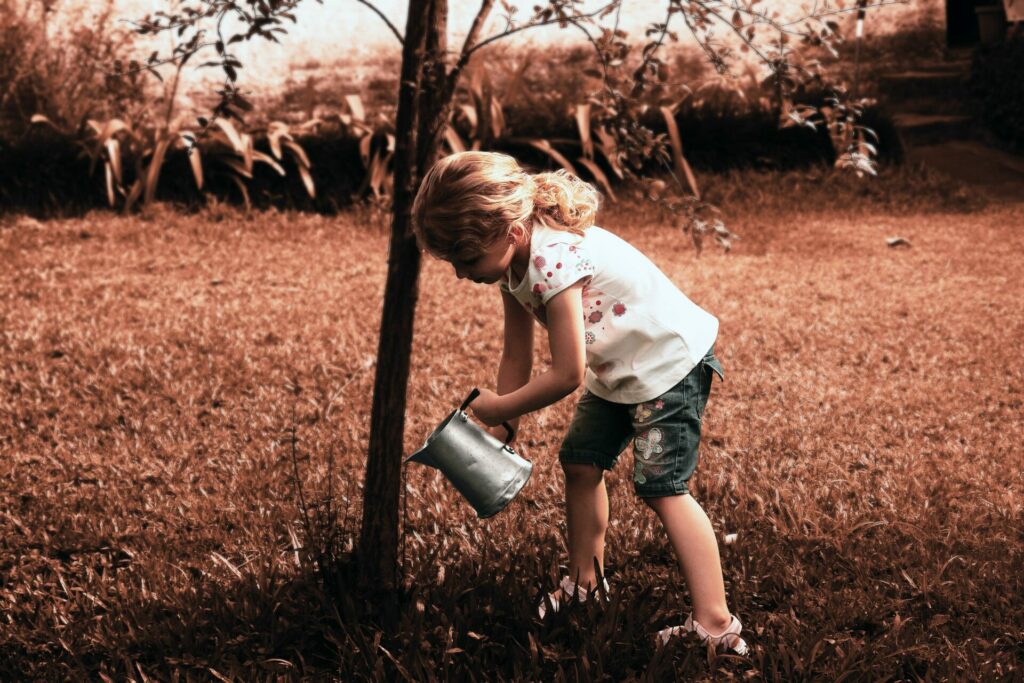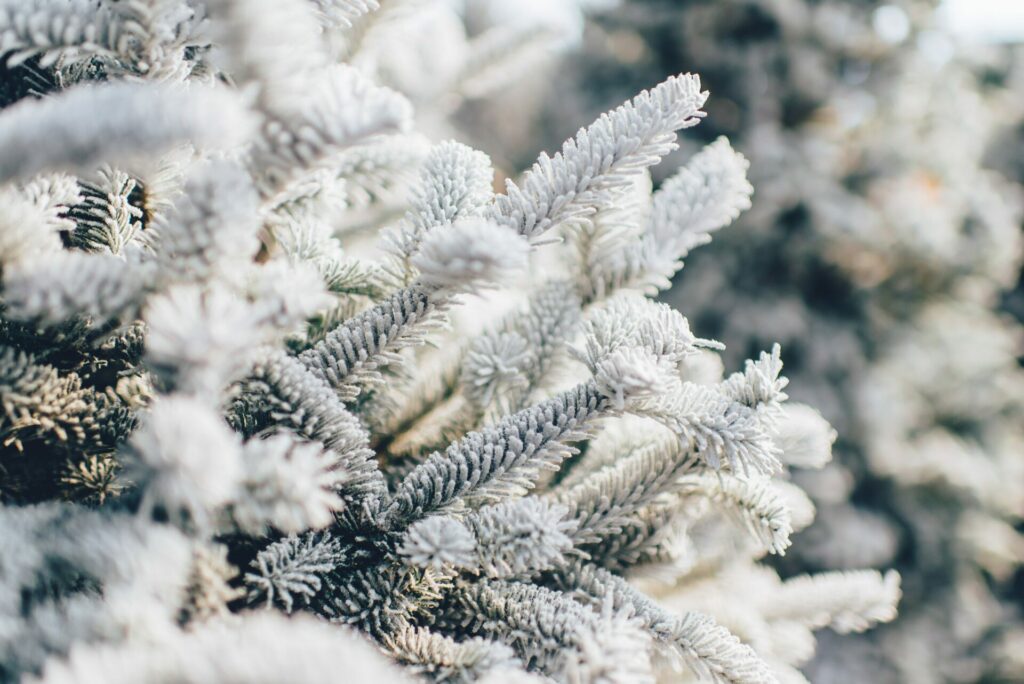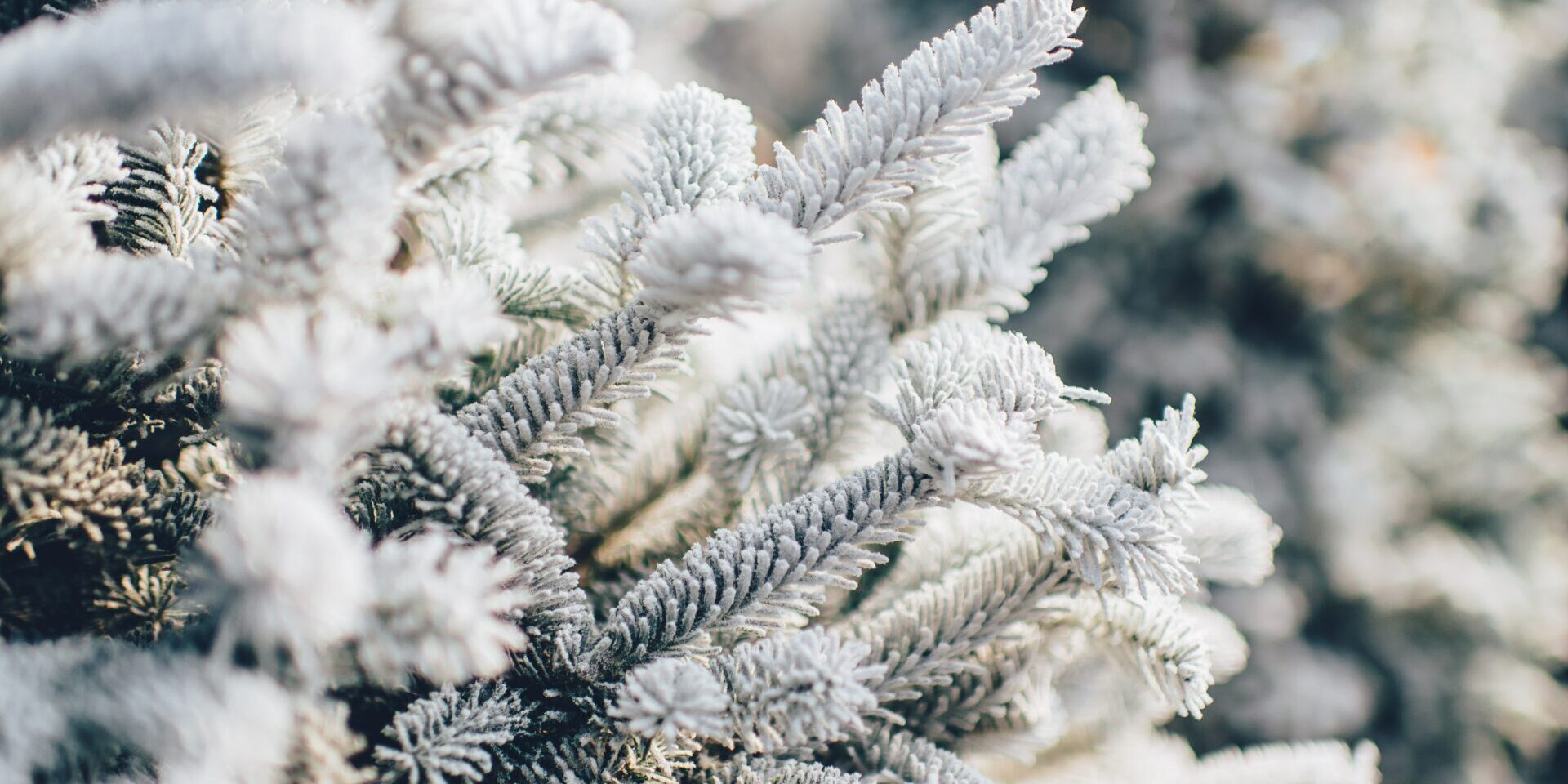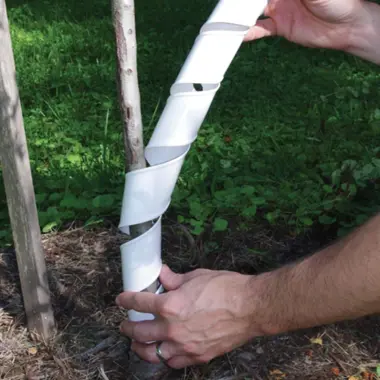“The care of the earth is our most ancient and most worthy, and after all our most pleasing responsibility. To cherish what remains of it and to foster its renewal is our only hope.” – Wendell Berry
As the year cycles into the winter season, the landscape around us begins to transition into dormancy. This is often a welcome time of year for those of us who like to slow down and head indoors for the dark winter months.
But, before you head into hibernation, there are a few tasks you should take on in your yard to begin preparing your trees and shrubs for winter.
Protect from Rabbits
In winter when food is scare, some rodents, like rabbits, will turn to young trees and shrubs for a food source. If they do this to your landscape, you may end up losing some of your plants over the winter.
When rabbits start eating plants they can girdle the trunks of young trees, which means they eat the bark away and damage the underlying vascular tissue. This tissue is what allows the tree to pump water and photosynthesize. When it’s damaged, your tree is unlikely to survive long term.
Rabbits will also nibble caning plants like raspberries, dogwoods, and serviceberries down to the ground. Most of these caning plants will grow back from the root stock, but in the meantime they will look sparse. If your raspberries produce fruit on second year growth, you won’t ever get a harvest if the canes are removed by animals every winter.
The solution to this challenge is to install tree protection on your trees and shrubs before winter. You want to focus on protecting young trees that have been planted recently and any caning shrubs on your property. You don’t have to worry about mature trees because of their thick bark.
The best tree protection has small holes to prevent rabbits and other animals from getting through. We recommend using:
- Chicken wire (best for shrubs)
- Hardware cloth (best for trees or shrubs)
- Tree wrap/guard (best for trees)
Use a wire cutter or tin snips to cut the wire into a large diameter cage that encompasses the root flare and trunk of a tree or all of the stems of a shrub. You can leave this wire around shrubs the following season as long as you ensure the branches or trunk have room to grow without rubbing on the metal. Make sure the wire or wrap is above snow line so rabbits don’t chew the exposed bark during times of high snowfall.
Protection from hungry animals is one of the most important steps in preparing your trees and shrubs for winter.
Protect From Sun
In winter, trees can be damaged by the sun, resulting in sunscald. This often occurs on trees with a southern or western exposure. The sun warms up the bark and adjacent tissue and then when it cools down at night to below freezing the tissue is damaged from the temperature fluctuation.
Winter sunscald is most common on young trees that don’t have thick bark, such as maples, linden, mountain ash, honey locust, plum, cherry, crabapple and apple trees. We recommend use tree wrap or white plastic tree guards to protect the trunks of these trees up to their first branches. As a bonus, the wrap will also protect from animal damage as well. Tree wrap and plastic sleeves should be removed in spring to prevent damage from insects.

Check Soil Moisture
Depending on the summer rainfall in your area, your trees may need some extra water if there wasn’t much rain or if they’ve been drought stressed. Trees’ roots need adequate moisture heading into the winter because the uppermost feeder roots are close to the soil. They will die off if the soil is excessively dry.
Water also functions as a natural insulator. If the soil and tree roots are moist they will be warmer than dry soil.
Young and newly planted trees are more susceptible to winter damage because their root systems aren’t as established as mature trees.
When watering in the fall, you don’t want to encourage new growth because it’s not hardy enough to withstand the winter. You just want to make sure the soil isn’t dried out when the ground freezes. You’re aiming for moist, but not soggy, soil. You can use a trowel to check to make sure the water is penetrating into the top 8-10″ of the soil.
Water slowly and deeply. You can turn a hose on to a small trickle and set a timer for 10-20 minutes. When the timer goes off, move the hose to another area of the root zone for another 10-20 minutes. Thoroughly water out to the tree’s drip line, the area of the tree where the canopy extends out to. Stop watering landscape trees and shrubs well before the ground freezes and once you check the soil and confirm it’s adequately moist, but not soggy.
Most of the Midwest receives fall rains, so you could wait until your trees drop their leaves in late fall and then assess whether you think the soil is dry enough to merit a good watering. Mulching your trees goes a long way toward retaining soil moisture, which is why we highly recommend it. Read more about how to put mulch around a tree.
Avoid shearing
Many homeowners prune their yews, boxwoods, arborvitae, privets and other hedges to help them maintain a desired form and shape in their landscape. We do not recommend sheering shrubs in the fall. At this time of year, it’s critical to avoid opening up new wounds on plants. Open wounds in winter can lead to moisture loss, which stresses and can ultimately damage a shrub. Sheering is best done in spring after new growth emerges.

Schedule winter tree work
Winter is when trees are dormant, so it can be one of the best times of the year to scheduling pruning and an important task when preparing trees and shrubs for winter.
Fatal tree diseases can easily be spread if trees and shrubs are pruned at the wrong time of the year. If you live in the eastern or central part of the US and have oak or elm trees on your property it’s important to know that these trees should only be pruned in the winter months when trees are dormant and insect activity is low to non-existent. Oak trees are susceptible to Oak Wilt and elm trees to Dutch Elm disease.
If you live in the Madison, WI area you’re in luck because Eco Tree Company’s certified arborists offer winter tree pruning. To get a quote, call us at (608) 886-0626 or contact us online.
Feed Your Trees
At Eco Tree Company, we recommend our customers apply a soil conditioner in the fall. Trees do most of their root growth in the fall, and our nutrient mixture provides everything the tree needs for its essential functions.
Our prescription blend of full spectrum natural and organic nutrients, bio-stimulants and carbon builds soil and feeds beneficial microorganisms. Our nutrient blend contains up to 70 micronutrients, fermentation extracts, vitamins, growth elicitors and microorganism foods.
For fall applications, we create a special mix that doesn’t contain nitrogen because (as you learned above) it’s not wise to promote canopy growth at this time of year.
Add the above tasks to your yard to do list for preparing trees and shrubs for winter on your property and set them up for a long, lush and vibrant life.
We’d love to help you care for your trees. To get a quote for winter pruning or fall soil conditioning, call us at (608) 886-0626 or contact us online.




